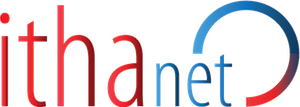
GeneID: 182
Names
| Common Name: | SERPINC1 | Type: | Gene |
|---|---|---|---|
| Chromosome: | 1 (NC_000001.11) | Locus: | NG_012462.1 (SERPINC1) |
| HUGO Symbol: | SERPINC1 | Full Name: | serpin family C member 1 |
| Exons: | 7 | Introns: | 6 |
Description:
The SERPINC1 gene encodes antithrombin III, member of a superfamily of protease inhibitors called serpins. The encoded protein is synthesized and secreted by hepatocytes. It binds polysulfated glycosaminoglycans, such as heparin, and regulates the blood coagulation cascade via inhibition of procoagulant serine proteases, including thrombin (factor IIa) and factor Xa. The major functional domains include the active site region and the heparin binding domain encoded by exon 6 and exon 2, respectively. Mutations in this gene cause Hereditary antithrombin III deficiency with an increased risk of recurrent venous thromboembolism (VT) including deep vein thrombosis (DVT) and pulmonary embolism. A polymoprhism in this gene presents a risk factor of venous thrombosis in patients with HbH disease.
Synonyms: AT3 , AT3D , ATIII , THPH7
Comments:
N/A
Number of entries/variants: 2
Publications / Origin
- Tyler-Cross R, Sobel M, McAdory LE, Harris RB, Structure-function relations of antithrombin III-heparin interactions as assessed by biophysical and biological assays and molecular modeling of peptide-pentasaccharide-docked complexes., Arch. Biochem. Biophys. , 334(2), 206-13, 1996
- Yoo JH, Maeng HY, Kim HJ, Lee KA, Choi JR, Song J, A heparin binding site Arg79Cys missense mutation in the SERPINC1 gene in a Korean patient with hereditary antithrombin deficiency., Ann. Clin. Lab. Sci. , 41(1), 89-92, 2011
- Sun NA, Cheng P, Deng DH, Liu RR, Lai YR, Analysis of the genetic variants associated with recurrent thromboembolism in a patient with hemoglobin H disease following splenectomy: A case report., Biomed Rep , 5(1), 23-26, 2016
| A/A | Date | Curator(s) | Comments |
|---|---|---|---|
| 1 | 2016-10-06 09:56:02 | The IthaGenes Curation Team | Created |